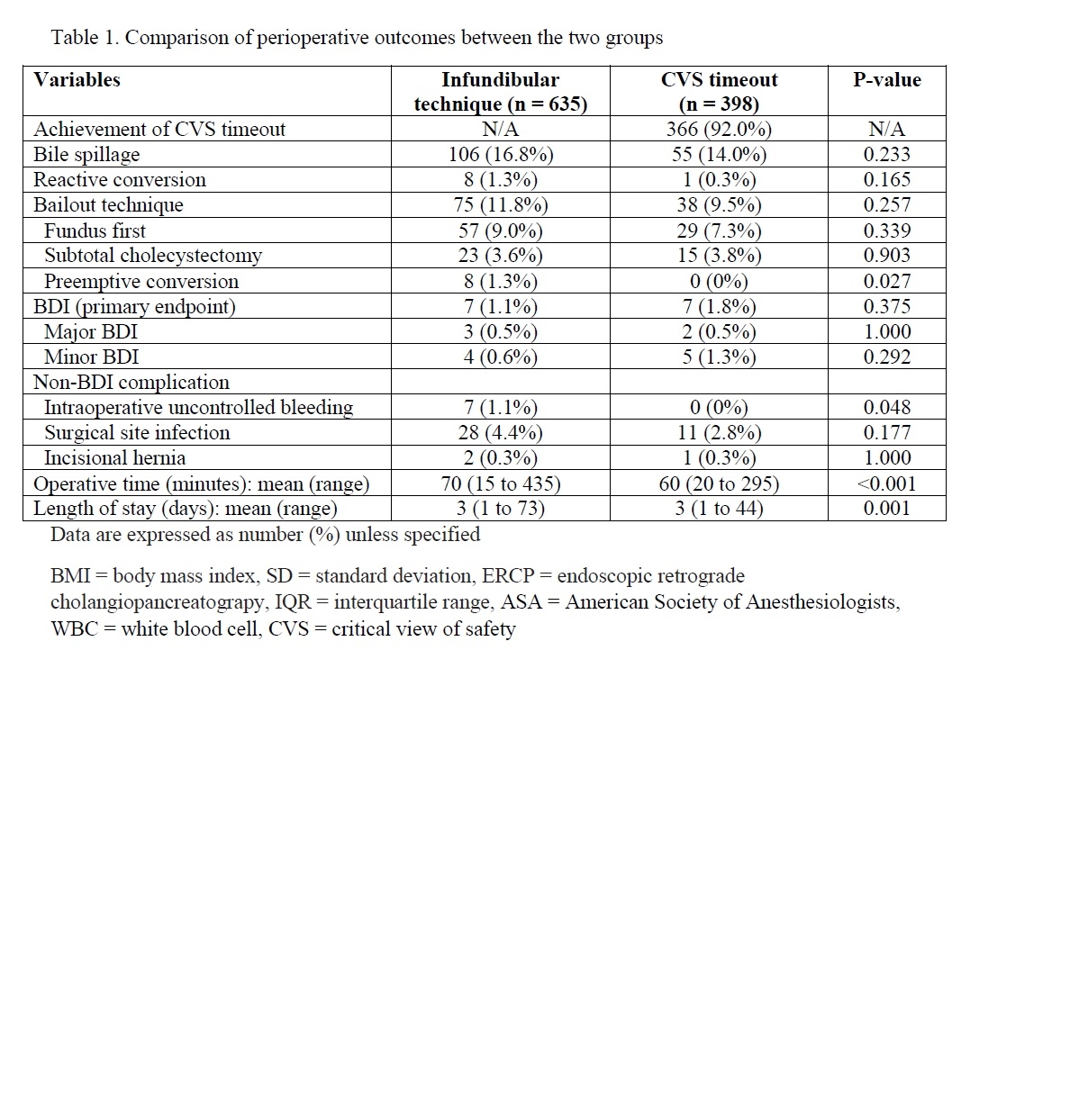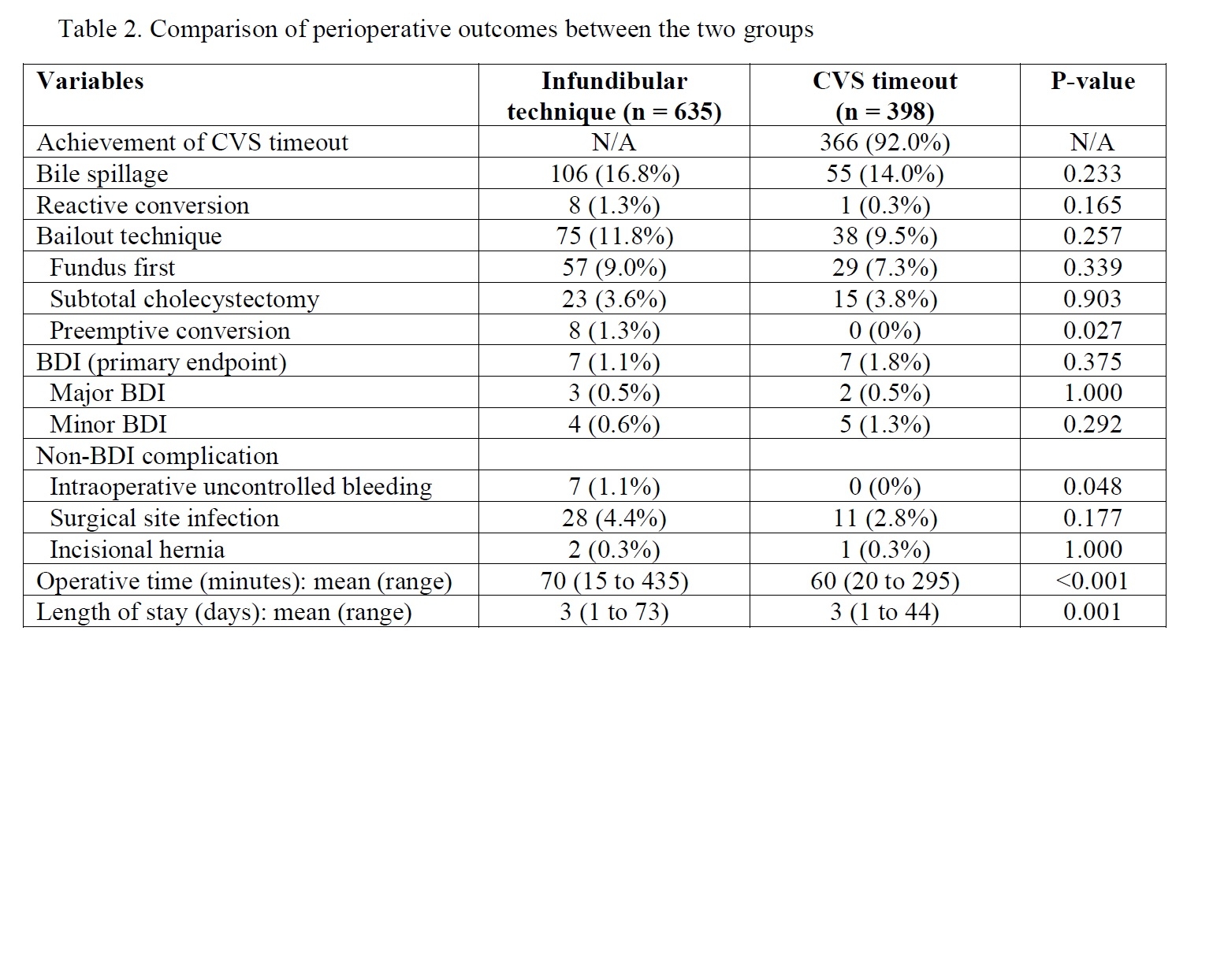IS THE CRITICAL VIEW OF SAFETY (CVS) TECHNIQUE SAFER IN PREVENTING BILE DUCT INJURY THAN THE INFUNDIBULAR (IF) APPROACH TECHNIQUE IN LAPAROSCOPIC CHOLECYSTECTOMY? - A RETROSPECTIVE AT A LARGE COMMUNITY TEACHING HOSPITAL
Araya Khaimook*, Thep Jusuwan, Arunchai Chang
Department of Internal Medicine, Hatyai Hospital, Hatyai, Gongkhla, Thailand
Background: Laparoscopic cholecystectomy (LC) is the standard treatment for cholelithiasis. However, despite improvements in technology and implementation of a safer approach such as the critical view of safety (CVS) technique, the risk of bile duct injury (BDI) remains an issue. This paper reviewed LC cases at a large community hospital for BDIs and compared BDI rates between conventional infundibular (IF) and CVS approaches. We hypothesized that there would be lower BDI rates in the latter group.
Methods: We conducted a retrospective study of 1 033 consecutive patients who underwent LC at our institution from November 2015 to November 2018. We divided patients into CVS and IF groups, based on operative reports, and compared the BDI rates and other relevant clinical outcomes.
Results: Of the 1 033 patients, 635 patients were in the IF group and 398 in the CVS group. There was no significant difference in the incidence of BDI between the IF and CVS groups (1.1% vs. 1.8%, respectively; p = 0.375). Compared with the IF technique, CVS exhibited less preemptive conversion to open cholecystectomy, lower incidence of uncontrolled intraoperative bleeding, shorter operative time and length of hospital stay. In multivariate regression analysis, only previous biliary inflammation and operative time >90 min were significant independent risk factors associated with BDI.
Conclusions: This study failed to demonstrate the beneficial effect of CVS in preventing the development of BDI. The reasons could be attributed to several factors including surgeons (varying skill and experience of surgeons) and case selection biases. Further review of the actual surgical videos may offer more clarity into the unexpected outcome.
Table 1. Comparison of perioperative outcomes between the two groups
Table 2. Univariate and multivariate logistic regression analysis of predicting factors of development of bile duct injuries
Back to 2022 Abstracts
